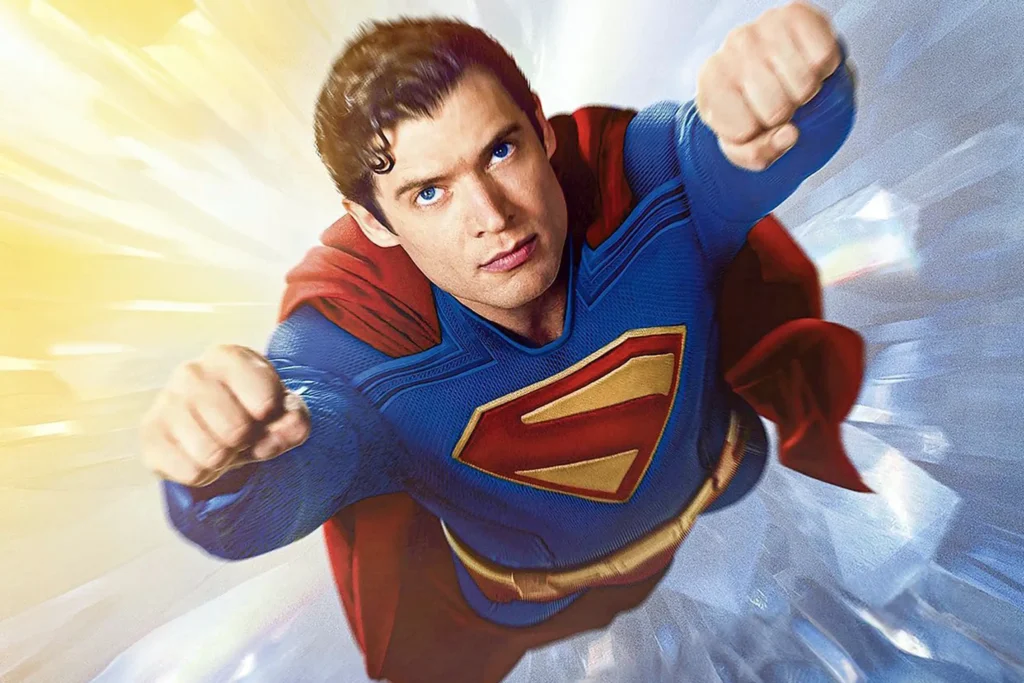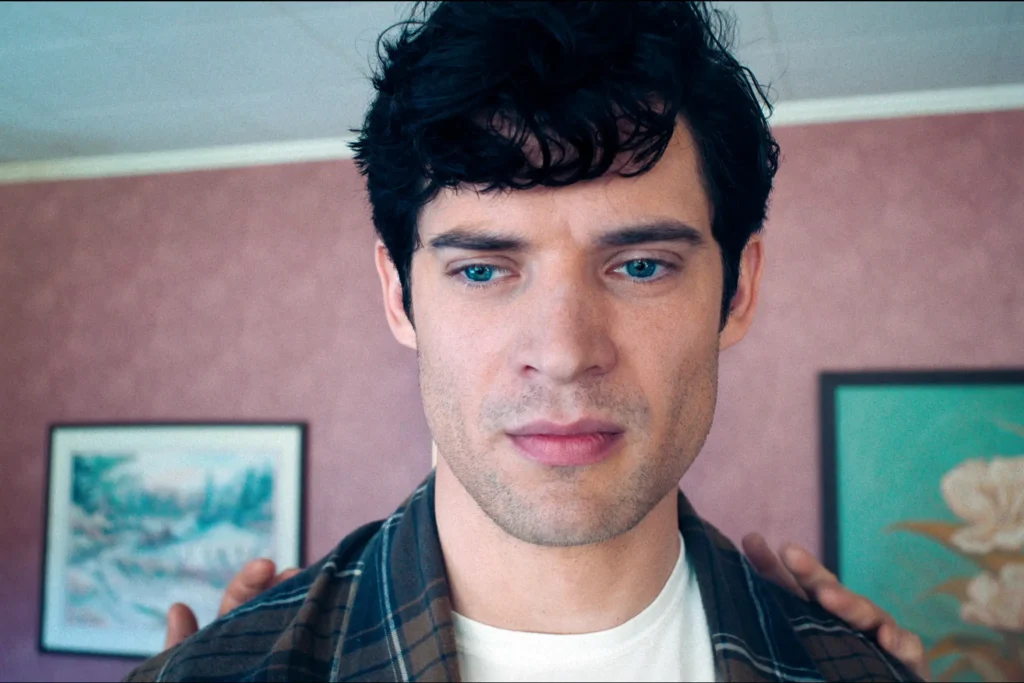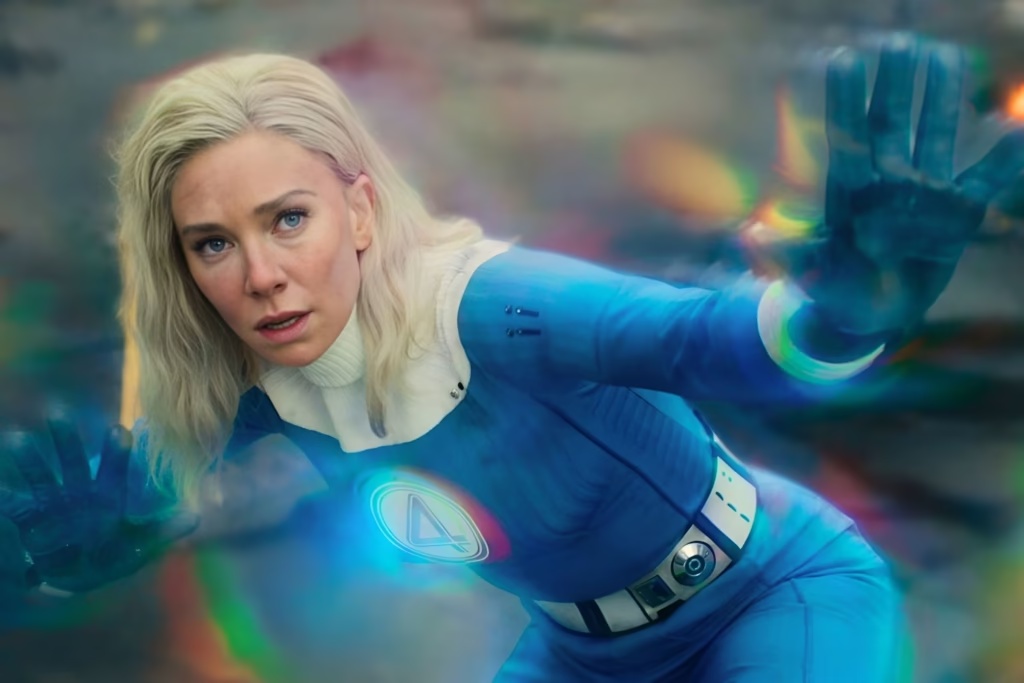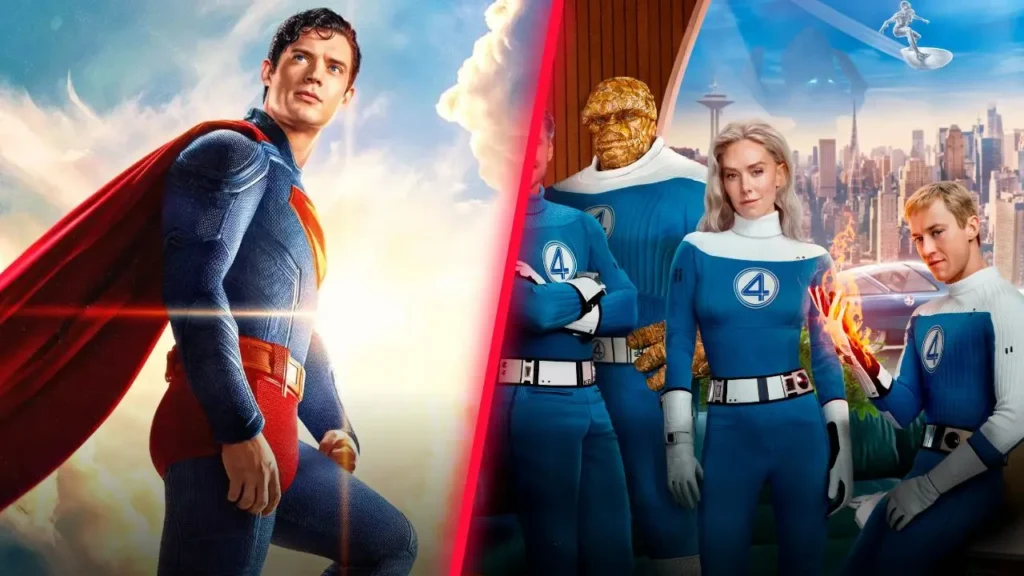Marvel and DC delivered an incredible one-two punch in July 2025 that rivals the legendary Iron Man and The Dark Knight combination from 2008. Both Superman and Fantastic Four: First Steps represent significant franchise reboots that breathe new life into beloved characters while establishing distinct tones for their respective cinematic universes.
Why These Superhero Reboots Share Remarkable Similarities
The Foundation of Comic Book Universes
Both films feature heroes who launched their respective comic book universes. Superman was the first superhero, debuting in Action Comics #1 and sparking the Golden Age of comics. Meanwhile, the Fantastic Four were technically the first Marvel comic that launched the Marvel Age of Heroes, making both characters foundational to superhero storytelling.
These movies showcase heroes in bright, comic-accurate costumes that leap directly off the page. Each film features lovable sidekicks destined for toy store success, boasts incredible ensemble casts, and creates universes that feel lived-in and warm. Most importantly, both stories begin several years into each superhero’s established career rather than dwelling on lengthy origin sequences.

Visual Excellence and Immersive Action
The visual effects in both movies reach top-tier quality with imaginative sequences that involve the camera directly in the action. Superman features moments where debris hits the lens during intense scenes, while Johnny Storm’s fire sprays ash and debris across the screen, creating visceral viewing experiences.
Both franchises had previously suffered from darker interpretations that didn’t reflect the optimism of their source material. Man of Steel presented Superman as a burden, while Fantastic 4 showed what happens when fame-obsessed introverts gain superpowers. The directors of these previous attempts were later replaced by studio executives, with Zack Snyder’s Justice League taken away and Josh Trank’s version heavily edited and reshot.
Parallel Story Structures and Heroic Journeys
Alternate Universe Settings
Superman and First Steps are both set in bright comic book worlds that don’t attempt to ground themselves in our real world. This creative choice allows for more fantastical storytelling without the constraints of realistic physics or social commentary.
In each movie, heroes face initial threats far more powerful than themselves, forcing them to live with defeat. During the second act, both sets of heroes travel to other worlds where their place in the universe gets shaken and all seems lost.
Moments of Despair and Hope
The heroes learn devastating news that makes them feel hopeless. Clark discovers his Kryptonian parents had darker intentions, while the Fantastic Four learn they can do nothing to stop Galactus except sacrifice their son. Public opinion turns against the heroes, and they begin doubting themselves.
However, both stories feature heroes receiving help from outside sources. Superman gets support from friends and family, while the Fantastic Four receive aid from the entire world. In climactic moments, heroes are brought to the brink of death when women working for the villains provide crucial assistance.
What Makes Each Movie Distinct
Superman’s Universe-Building Advantage
Superman benefits from being the first movie in a completely fresh cinematic universe. While The Suicide Squad connects loosely to this film, it essentially represents a clean slate without baggage or expectations from previous continuity.

More importantly, this movie isn’t locked into a predetermined house style. Marvel movies are expected to maintain fun, quippy tones even when inappropriate for the story. Here, James Gunn establishes exactly the tone he wants while working with the most iconic superhero of all time, someone already proven successful at the box office.
Gunn can lean on nostalgia by sampling John Williams’ original score and placing Superman in mythic surroundings that remind audiences of childhood wonder. However, the movie also had to do heavy lifting for universe establishment, requiring an opening crawl because test audiences were confused by seeing numerous unfamiliar superheroes.
Fantastic Four’s Family-First Approach
The Fantastic Four inherited three failed franchise attempts and the wounded box office expectations of the current MCU landscape. Rather than spending the first half on origin story repetition, the film provides backstory through news broadcasts while establishing this as a new universe set in the 1960s.

The movie had to convey significant information about previous adventures against unseen supervillains without slowing down the pace. Many comic elements are ignored or only implied, such as Ben Grimm’s resentment about his transformation or Johnny’s tendency to irritate him.
However, the film nailed the central Fantastic Four theme: “We will fight it together as a family.” Instead of another world-saving adventure, this became a story about the world trying to save a baby, making it fundamentally about family bonds and sacrifice.
Character Development and Thematic Depth
Superman’s Humanity Focus
Superman’s running theme centers on weakness and humanity – specifically how weakness makes us human. The ideological battle between Lex Luthor and Superman questions whether humanity should strive toward perfection or embrace imperfection as defining our humanity.
The twist revealing that Kal-El was sent to Earth for conquest rather than salvation becomes crucial to the story’s theme. This Superman becomes super because he’s human, not because he’s Kryptonian. Despite being sent to conquer, Superman chooses goodness because of what Martha and Jonathan Kent taught him, not predetermined Kryptonian destiny.

This represents a fundamental difference from previous interpretations. Rather than predetermined heroism, Gun’s Superman demonstrates that we all make daily choices to be good despite reality’s cruelty. The character represents hope that goodness comes from human choice rather than alien genetics.
Fantastic Four’s Parental Perspective
Fantastic Four: First Steps functions as a movie for parents and about parenting. The story explores Reed Richards‘ overwhelming dread about experiments with uncontrollable outcomes, paralleling his terror about having a baby in an unpredictable world.
Pedro Pascal delivers exceptional performance as Reed Richards, capturing the character’s deep emotional life without explicit dialogue. The best moments show Reed facing dread about uncontrollable experimental results, mirroring parental anxiety about raising children in an uncertain world.

Sue Storm’s willingness to use every ounce of energy to protect her child from Galactus resonates powerfully with parent audiences. The movie succeeds by making everyone scientists and aging up the characters, creating mature perspectives on family responsibility and sacrifice.
Visual Spectacle and Comic Book Authenticity
Embracing Comic Book Elements
Both movies celebrate comic book silliness without shame, a refreshing change from superhero films that seem embarrassed by their source material. These productions lean into bright colors and fantastical elements rather than muting them for “realism.”
Superman features moments like Guy Gardner and Mr. Terrific appearing without extensive backstory explanation, trusting audiences to accept these characters naturally. The scene where Superman and Lois have a romantic conversation while Mr. Mxyzptlk battles outside captures the whimsical tone perfectly.
Fantastic Four delivers the definitive Galactus movie experience, finally showing the cosmic devourer properly on screen rather than the cloud-based disappointment from previous attempts. The movie succeeds in presenting real science fiction concepts while maintaining the family-centered emotional core.
Action Sequences and Power Usage
Both films excel at showing powers used in emotionally meaningful and visually spectacular ways. Sue Storm revealing the baby to Reed using her powers creates a beautiful moment that combines character development with visual flair, similar to classic sequences like Quicksilver’s “Time in a Bottle” scene or the upside-down Spider-Man kiss.
The action sequences serve character development rather than existing purely for spectacle. Superman’s battles feel grounded in emotional stakes, while the Fantastic Four’s confrontation with Galactus centers on family protection rather than generic world-saving.
The Verdict: Which Movie Reigns Supreme?
Superman Takes the Crown
After careful consideration, Superman emerges as the superior film for several compelling reasons. The movie delivers a more complete emotional journey with clearer thematic throughlines about human goodness and choice versus predestination.
Superman succeeds as both crowd-pleasing entertainment and thoughtful character study. The film balances humor, action, and heart more effectively while establishing a promising foundation for future DCU installments. The chemistry between Rachel Brosnahan and David Corenswet creates one of the best romantic pairings in comic book movie history.
The movie generates more excitement for future installments in its universe compared to anticipation for Fantastic Four’s integration into the existing MCU. James Gunn’s curatorial vision for the DCU feels more compelling than seeing these characters eventually interact with established Avengers.
Fantastic Four’s Strengths
While Superman takes the victory, Fantastic Four: First Steps deserves recognition for several achievements. The movie succeeds brilliantly as a family-focused narrative that resonates powerfully with parent audiences. Pedro Pascal and Vanessa Kirby deliver exceptional performances that ground the cosmic concepts in human emotion.
The film’s commitment to science fiction elements and 1960s retrofuturist aesthetic creates a unique visual identity. The decision to skip repetitive origin storytelling and focus on established family dynamics proves wise, even if it requires significant exposition.
Impact on the Superhero Genre
A Renaissance Moment
July 2025 represents a crucial renaissance moment for superhero cinema. Both movies demonstrate that audiences hunger for optimistic, colorful adventures that celebrate comic book elements rather than apologizing for them. This confidence boost arrives at a perfect time when the genre needed fresh energy.
The success of both films sends important messages to studios. Superman proves that audiences will embrace unfamiliar characters when properly introduced, potentially influencing Marvel’s post-Secret Wars approach to character introduction. Kevin Feige specifically praised Superman’s confidence in not over-contextualizing new heroes.
Fantastic Four demonstrates that Elseworlds-style creative freedom produces compelling results, potentially encouraging more experimental storytelling approaches in both Marvel and DC properties.
Cultural Significance
Both movies preach positivity, compassion, and love for others during a time when such messages feel particularly necessary. They celebrate comic book history itself, drawing from Golden Age, Silver Age, and modern storytelling techniques to create respectful adaptations.
Superman represents the beginning of superhero comics, while Fantastic Four revolutionized the genre with the Marvel approach. Seeing these two seminal moments represented on screen within two weeks of each other creates an incredible celebration of the medium’s history and potential future.
Conclusion
While both Superman and Fantastic Four: First Steps deserve recognition as excellent superhero films, Superman ultimately delivers a more complete and emotionally satisfying experience. The movie succeeds as both entertainment and meaningful character study while establishing exciting possibilities for future DCU adventures.
However, the real victory belongs to comic book fans who finally received two movies that celebrate rather than diminish their source material. This July 2025 superhero showcase proves that audiences are ready for optimistic, colorful adventures that trust viewers to embrace fantastical elements without cynical commentary.
Both films represent important steps forward for their respective universes and the superhero genre overall. They demonstrate that success comes from understanding what makes these characters special rather than trying to make them fit into restrictive formulas.

